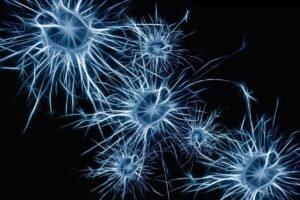POTS Terminology Explained. Postural Orthostatic Tachycardia Syndrome can be overwhelming at first glance—not only due to its symptoms but because of the maze of terminology used in medical literature, forums, and research.
Whether you’re newly diagnosed or a veteran advocate, understanding key terms can empower your decision-making, sharpen your self-advocacy, and deepen your grasp of the condition. This guide outlines the most critical words you’ll encounter when diving into your own POTS research.
Core Definitions to Know When Researching POTS
Postural Orthostatic Tachycardia Syndrome (POTS)
A form of dysautonomia characterized by an excessive heart rate increase upon standing, not explained by dehydration or blood loss. It’s typically diagnosed with a heart rate rise of 30+ bpm (40+ bpm in adolescents) within 10 minutes of standing.
Do you track your daily sodium intake for POTS?
Dysautonomia
A blanket term referring to dysfunction of the autonomic nervous system, which controls involuntary actions like heart rate, digestion, and temperature regulation. POTS is one form of dysautonomia.
Orthostatic Intolerance
A key symptom in POTS where standing up leads to fatigue, dizziness, palpitations, or even syncope. It stems from the body’s inability to manage blood pressure and heart rate properly in vertical positions.
Tachycardia
An elevated heart rate—generally over 100 bpm at rest. In POTS, it’s triggered by standing and can persist for long durations.
Presyncope
A feeling of near-fainting: lightheadedness, nausea, sweating, or tunnel vision. Many with POTS experience presyncope daily, especially when dehydrated or overheated.
Syncope
Actual fainting, where loss of consciousness occurs due to poor blood flow to the brain. While less common than presyncope in POTS, it may occur in severe cases.
Baroreflex
A mechanism that helps your body regulate blood pressure through changes in heart rate and blood vessel tone. Dysfunctional baroreflex sensitivity contributes to the symptoms of POTS.
Hypovolemia
Low blood volume. It’s common in people with POTS, resulting in reduced ability to circulate blood efficiently upon standing.
Venous Pooling
Blood collecting in the lower half of the body upon standing, due to impaired vascular tone. This leads to reduced return of blood to the heart and brain—causing dizziness and fatigue.
🗣 Pronunciation & Definitions Guide
🩺 Primary Conditions & Syndromes
| Term | Pronunciation | Definition |
|---|---|---|
| POTS | pots | A type of dysautonomia with excessive heart rate upon standing. |
| Dysautonomia | dis-aw-tuh-NOH-mee-uh | Broad term for autonomic nervous system dysfunction. |
| Orthostatic Hypotension | or-thuh-STAT-ik hy-po-TEN-shun | Drop in blood pressure upon standing. |
| Neurocardiogenic Syncope | nur-oh-kar-dee-OH-jen-ik SIN-kuh-pee | Fainting due to ANS misfiring under stress; same as vasovagal syncope. |
| Vasovagal Syncope | vay-zoh-VAY-gul SIN-kuh-pee | Fainting caused by drop in heart rate and blood pressure. |
| Inappropriate Sinus Tachycardia (IST) | sin-us tak-ih-KAR-dee-uh | Chronically elevated resting heart rate. |
| Autoimmune Autonomic Ganglionopathy (AAG) | gan-glee-ON-ah-puh-thee | Autoimmune attack on autonomic ganglia. |
| Multiple System Atrophy (MSA) | mul-ti-pul sis-tum AT-roh-fee | Progressive neurodegenerative disorder affecting ANS and movement. |
| Pure Autonomic Failure (PAF) | paf | Gradual loss of autonomic function, causing blood pressure problems. |
🧠 Autonomic Nervous System & Regulation
| Term | Pronunciation | Definition |
|---|---|---|
| Autonomic Nervous System (ANS) | aw-tuh-NOM-ik | Governs involuntary bodily functions like heartbeat and digestion. |
| Baroreflex | bare-oh-REE-fleks | Reflex for regulating blood pressure. |
| Sympathetic Overdrive | sim-puh-THET-ik | Excess activation of the “fight or flight” system. |
| Parasympathetic Withdrawal | pair-uh-sim-puh-THET-ik | Decreased activity of the “rest and digest” system. |
| Heart Rate Variability (HRV) | — | Time fluctuation between heartbeats; indicates autonomic balance. |
💉 Testing, Devices & Diagnostics
| Term | Pronunciation | Definition |
|---|---|---|
| Tilt Table Test | — | Simulates standing to assess orthostatic symptoms and vitals. |
| Holter Monitor | HOLE-ter | Wearable device that records heart rhythms over time. |
| QSART (Quantitative Sudomotor Axon Reflex Test) | cue-sart | Tests sweat response and autonomic nerve function. |
| Skin Biopsy for Small Fiber Neuropathy | — | Confirms nerve damage contributing to dysautonomia. |
| Catecholamine Blood Test | kat-uh-KOH-luh-meen | Measures stress hormone levels like adrenaline and norepinephrine. |
💊 Medications & Supplements Commonly Used
| Term | Pronunciation | Definition |
|---|---|---|
| Beta-Blockers | bay-tuh BLAH-kurz | Reduce heart rate and calm overactive nervous system. |
| Midodrine | MID-oh-dreen | Raises blood pressure by constricting blood vessels. |
| Fludrocortisone | floo-droh-KOR-tih-zone | Helps retain sodium and water to increase blood volume. |
| Ivabradine | eye-VAB-ruh-deen | Lowers heart rate without affecting blood pressure. |
| Electrolyte Supplementation | — | Sodium, potassium, magnesium support hydration and pressure. |
| Salt Tablets / Sodium Capsules | — | Used to maintain volume and manage orthostatic intolerance. |
| IV Saline Infusions | — | Used for severe hypovolemia or rapid rehydration. |
⚡ Symptoms, Syndromes & Terms in Management
| Term | Pronunciation | Definition |
|---|---|---|
| Presyncope | pree-SIN-kuh-pee | Feeling faint without losing consciousness. |
| Syncope | SIN-kuh-pee | Temporary loss of consciousness due to poor circulation. |
| Hypovolemia | hy-po-voh-LEE-mee-uh | Low blood volume common in POTS. |
| Venous Pooling | VEE-nuhs POO-ling | Blood collecting in lower limbs from poor circulation. |
| Mast Cell Activation Syndrome (MCAS) | mast sell | Condition linked to histamine intolerance, common in POTS overlap. |
| Brain Fog | — | Cognitive slowing—poor concentration, memory, processing. |
| Post-Exertional Malaise (PEM) | mal-AYZ | Worsening of symptoms after minimal activity. |
| Fatigue | fuh-TEEG | Persistent tiredness not relieved by rest. |
| Lightheadedness | lite-HEAD-ed-ness | Dizziness or floating sensation, especially on standing. |
👕 Lifestyle Tools & Management Aids
| Term | Pronunciation | Definition |
|---|---|---|
| Compression Garments | — | Prevent venous pooling by improving circulation. |
| Recumbent Exercise | ree-KUM-bent | Seated physical activity like rowing or swimming, POTS-friendly. |
| Fluid Loading | — | Strategic water and salt intake for symptom control. |
| Pacing | — | Carefully managing energy to avoid symptom flares. |

GnarlyTree | DIAGNOSTIC TESTS & CARE
QSART (Quantitative Sudomotor Axon Reflex Test) | POTS Test
Understanding the Nervous System and Sudomotor Function The Quantitative Sudomotor Axon Reflex Test (QSART) is a specialized diagnostic tool used to assess the small nerve fibers that control sweating. These...
Frequently Asked Questions
What causes POTS?
POTS can be triggered by viral infections, autoimmune responses, or genetic predisposition that disrupt the autonomic nervous system.
Is presyncope different from syncope?
Yes—presyncope is the sensation of nearly fainting, whereas syncope is actual loss of consciousness.
Can POTS be cured?
There’s no known cure yet, but many patients manage symptoms effectively with lifestyle changes and medication.
Does heart rate always increase in POTS?
Yes, a hallmark of POTS is an excessive heart rate increase when standing, but other symptoms vary.
Can dehydration make POTS worse?
Definitely—low fluid volume worsens symptoms like dizziness and presyncope.
What’s the link between POTS and anxiety?
Sympathetic overdrive in POTS can mimic anxiety symptoms, making differentiation challenging.
Are compression garments really effective?
They can significantly help reduce symptoms like lightheadedness by minimizing venous pooling.
Is exercise safe for people with POTS?
Yes, but it should be paced and recumbent-style at first—like rowing or swimming—to avoid symptom flares.
Why are electrolytes so important?
They aid in fluid retention and blood pressure stabilization, essential for managing orthostatic intolerance.
What kind of doctor treats POTS?
Neurologists, cardiologists, or specialists in autonomic disorders often manage POTS care.
Final Thoughts
Understanding the terminology of POTS transforms confusion into clarity. Each word holds weight in uncovering the complex interplay between your nervous system and cardiovascular response. The better you grasp terms like presyncope, orthostatic intolerance, and autonomic dysfunction, the more empowered your research—and your journey—will be. By demystifying the language, you position yourself not just to cope with POTS, but to advocate, inform, and thrive.

